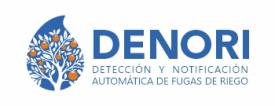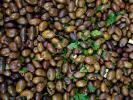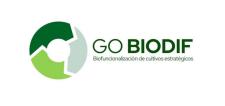TECHNOCHERRY Operational Group: Optimizing cherry fruit size by thinning dormant buds
- Type Operational group
- Status In progress
- Execution 2024 -2027
- Assigned Budget 149.950,00 €
- Scope Autonómico
- Autonomous community Aragón
The TECHNOCHERRY project seeks to evaluate the effects of bud thinning during dormancy in cherry trees to increase cherry fruit size, and therefore their quality and price. Thinning is harmless to the tree and the environment, as no chemicals are applied (as with chemical thinning) and no energy (diesel and/or electricity) is used, as with mechanical flower thinning. This reduces cultivation costs, the replacement of trees affected by phytotoxicity, and the impact on workers.
Six treatments will be analyzed on different farms: control, mechanical flower thinning, chemical flower thinning, manual fruit thinning, and the two innovative treatments included as new features in this project: manual bud thinning and mechanical bud thinning.
During the 2025, 2026, and 2027 crop seasons, the impact of bud thinning on productivity will be evaluated. To this end, flowering, fruit set, and harvest will be monitored; post-harvest measurements will be made such as fruit size, weight, firmness, color, soluble solids content, and acidity.
Cherry fruit size is a crucial factor in the quality and value of the cherry crop. This project investigates the effect of an innovative technique, manual bud thinning, on final cherry size. Bud thinning involves the selective removal of buds before they emerge in spring.
Project activities:
- Field selection, experimental design development, and delineation of experimental plots. This includes the selection of plots and species, as well as the design of the trials.
- Carrying out and maintaining tests.
- Analysis of the trials: impact on production (flowering, fruit set, ripening, and harvest). Quality and productivity will be assessed, taking into account interrelated parameters such as flowering, fruit set, and harvest. The flowering period and percentage of fruit set will be determined, and the yield collected from each tree will be analyzed. Cherry size, weight, firmness, color, soluble solids content, and acidity will also be determined. - Results will be shared, observations will be exchanged, and conclusions will be drawn.
- Analysis and transfer to the sector.
- Actions to disseminate and communicate the project's results to producers, processors, distributors, and consumers.
Cherry fruit size is a crucial factor in the quality and value of the cherry crop. This project investigates the effect of an innovative technique, manual bud thinning, on final cherry size. Bud thinning involves the selective removal of buds before they emerge in spring.
The hypothesis to be evaluated is that reducing the number of buds will allow for a more efficient distribution of the tree's resources to the remaining fruit, resulting in larger fruit and, consequently, a higher harvest price. The advantages compared to other traditional techniques will be assessed. This technique is easier to implement, more economical, and more environmentally friendly.
It is expected to improve the profitability of cherry orchards, reduce production costs, and generate environmental benefits by eliminating the use of chemicals and reducing fuel consumption.
The project is aligned with the objectives of the CAP Strategic Plan 2023-2027, seeking to improve the competitiveness and sustainability of farms, promote the efficient management of natural resources, and enhance adaptation to climate change. The initiative is carried out through a consortium comprised of six entities, including agricultural consulting, production, and marketing companies, an agricultural association, and two technology centers.
The general objective of the project is to evaluate the effects of bud thinning during dormancy in cherry trees.
The expected results of the TECHNOCHERRY project are mainly:
- Increased cherry fruit size, which leads to improved quality and, consequently, a higher market price. The goal is to achieve yields of 12-14,000 kg/ha of fruit measuring 28-30 mm.
- Harvest uniformity. Reducing competition among developing fruit is expected to improve harvest uniformity.
- Mitigation of alternate cropping, that is, avoiding the alternation of a low harvest in the following year with a high harvest.
- Environmental benefits stem from the elimination of chemical use and reduced fuel consumption. This also means lower cultivation costs, the replacement of trees affected by phytotoxicity, and a reduced impact on operators.
- Reduction in production costs associated with manual fruit thinning, estimated at around €1,500/ha
- Coordinator/entity name: Aragon Foundation for Innovation and Agri-Food Transfer (FITA)
- Postal address: Avda. Montañana, 930, 50059, Zaragoza
- Coordinator/entity email: info@fita-aragon.es
- Telephone: 976713305
- Fundación de Innovación y Transferencia Agroalimentaria de Aragón (FITA)
- TULARE CREEK SL (dnbarkley@tulare-creek.com)
- FRUIT LUXURY COMPANY, S.L.U. (producccion@fruitluxurycompany.com)
- SAT 4301 RÍO CINCA (lucia.plaza@cincagroup.com)
- NECTACINCA SL(lucia.plaza@cincagroup.com)
- Centro de Investigación y Tecnología Agroalimentaria de Aragón, CITA (info@cita-aragon.es)
- Fundación de Innovación y Transferencia Agroalimentaria de Aragón (FITA)






